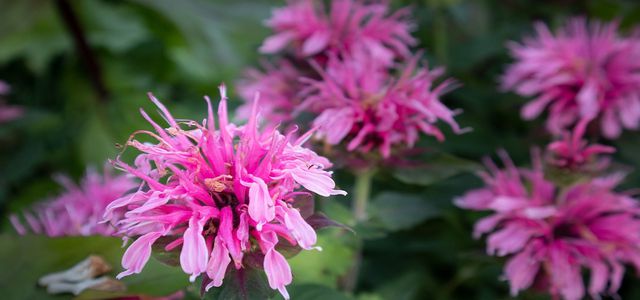
- #Bee balm plant winter care how to
- #Bee balm plant winter care full
#Bee balm plant winter care how to
How to harvest: Snip leaves and sprigs with a garden pruner. At midseason or in autumn, cut back the plant back by half it will regrow new leaves in 4 weeks or so. Leaves for drying are best harvested before the plant flowers in summer, usually about the time lower leaves begin to yellow. Older, lower leaves have the strongest aroma. When to harvest: Pinch off and use leaves and sprigs as needed during the growing season. Spray plants with compost tea during the season compost tea is a natural fungicide. To prevent these fungal diseases, keep plants sufficiently spaced to allow for good air circulation. Diseases: Lemon balm is susceptible to verticillium wilt, mint rust, and powdery mildew. Pests: Lemon balm has no serious pest problems. The plant may freeze back to the ground in winter but will re-grow from underground roots and renew itself in spring. Winter growing: Cut back lemon balm in fall leaving just 2 inches of stem. Over-winter lemon balm in a protected area such as an unheated garage or patio. Choose a container 6 to 8 inches deep and wide. Container growing: Lemon balm can be container grown as an annual. Deadhead plants to prevent self-sowing. Cut plants back by half after flowering to encourage a second crop of leaves and a compact form. Remove unwanted plants before they become established. To keep lemon balm from becoming invasive, set it in the garden in a bottomless container that will keep the roots in place. Care: Lemon balm spreads by underground roots. Lemon balm grows in a pot Lemon balm care and maintenance Feeding: Lemon balm does not require extra feeding side-dress plants with aged compost during the growing season. Once established lemon balm tolerates drought. Watering: Lemon balm requires regular, even watering. Lemon balm attracts honeybees plant it near fruit trees to aid pollination. Plant lemon balm with hollyhocks, angelica, and nasturtiums. The fragrance of lemon balm helps deter insects that attack cabbage family crops and also masks the smell of cabbage. Companion planting: Grow lemon balm with broccoli, cauliflower, and other cabbage family plants. How much to plant: Grow 4 lemon balm plants for cooking grow 6 to 12 plants for tea and preserving. Spacing: Thin successful seedlings to 8 inches apart and later thin plants to 18 inches apart. 

Keep the seedbed moist until the seed germinates. Planting depth: Sow lemon balm seed ¼ inch deep very light cover is all lemon balm needs for germination.Cuttings from new growth can be started in moist sand. Root divisions can be planted at any time during the growing season but will become established quicker in cool weather. Outdoor planting time: Sow lemon balm in spring at about the average date of the last frost.


Transplanting to the garden: Set transplants in the garden after the last spring frost.Seeds require light to germinate so do not cover them or cover them only lightly with fine soil. Seed starting indoors: Sow seeds indoors for about 2 months before transplanting lemon balm into the garden after the last spring frost.Lemon balm leaves When to plant lemon balm However, lemon balm will grow in almost any soil but not very wet soil. Soil preparation: Grow lemon balm in well-drained, sandy loam.
#Bee balm plant winter care full
Best location: Plant lemon balm in full sun it will tolerate shade.








 0 kommentar(er)
0 kommentar(er)
